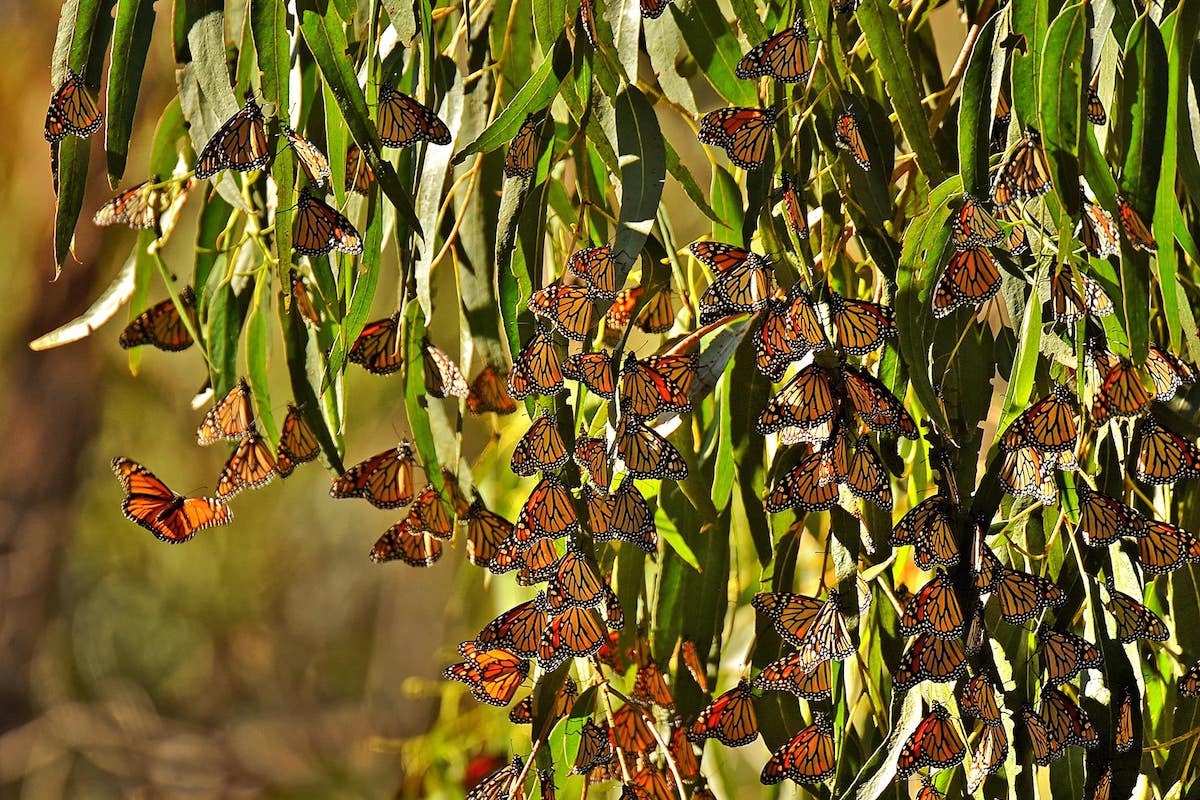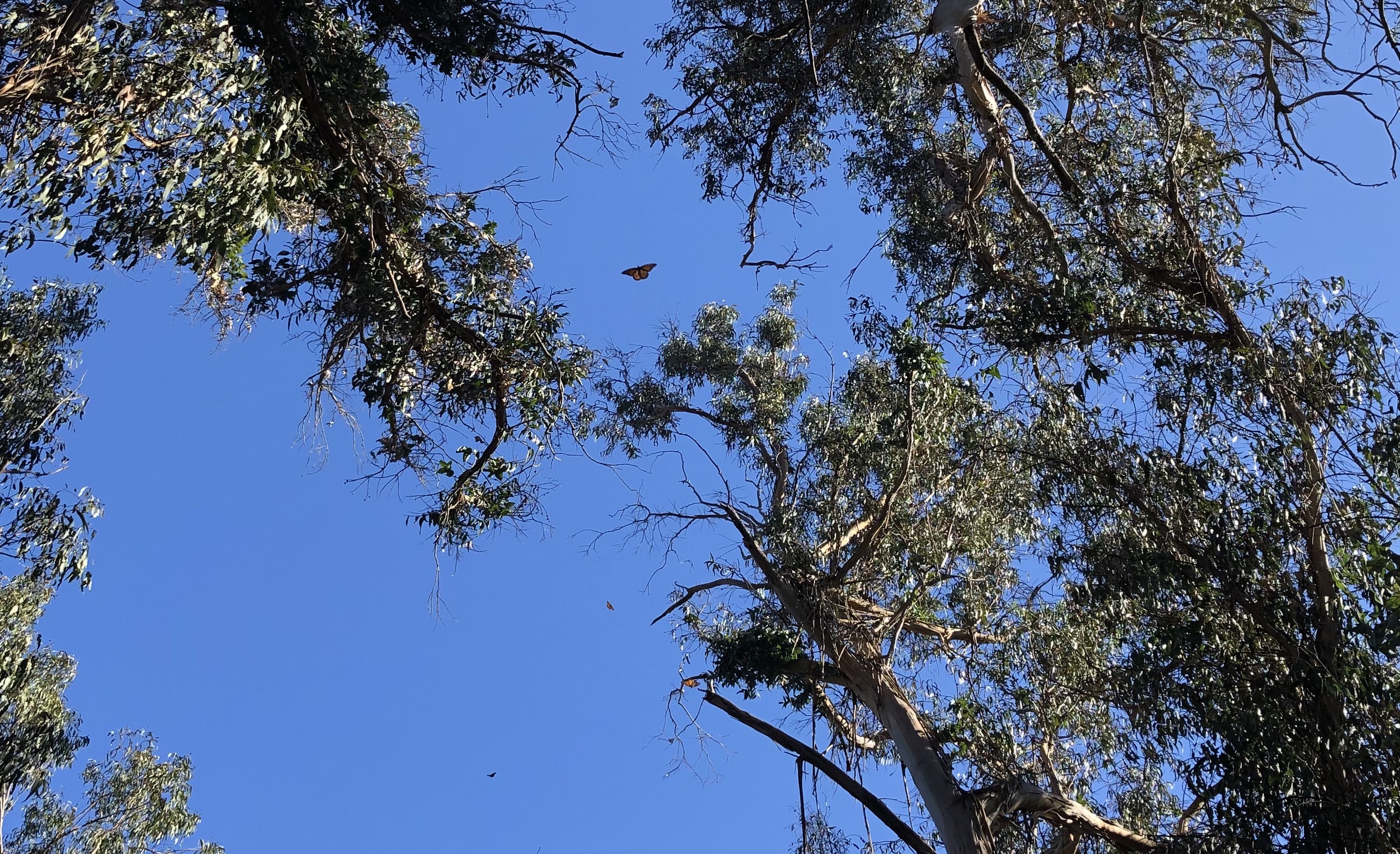Monarch Butterflies Return to Ellwood Mesa in Goleta
Population up Again, City Restoring Eucalyptus Grove

A flame-colored butterfly gliding across a trail at the eucalyptus groves in Ellwood is the first clue to look overhead. Up toward the tops of the 100-foot-tall trees is where the monarchs cluster, on winter vacation after emerging from a chrysalis somewhere west of the Rocky Mountains.
Already, the count since October is nearly at 11,000 butterflies, a tally readily visible at the City of Goleta’s GoletaButterflyGrove.org website. The trend is back up after the dismal tallies of 2018-2021, when a relative handful of butterflies were found at Ellwood.
Last year’s butterfly total of more than 12,000 was dashed by the heavy January rains, said George Thomson, head of parks and open spaces for the city. And he’s expecting a wetter-than-average El Niño this year, too.

Thomson said the storms were devastating, knocking down trees and drenching the butterflies: “It blew a lot of them out of the grove,” he said. Trees had died off during the drought years, about 2,000 of the estimated 8,000 trees in the Ellwood groves, leaving many spots with less protection from the winds. Even now, there’s more sunlight and less humidity than the monarchs prefer.
The city is undertaking the restoration of the grove, replanting trees, and cordoning off the paths for visitors, for good reason. As a brisk wind shakes the trees, causing them to creak and rub and scent the air with oil, occasionally a branch or hunk of bark can be heard crashing to earth. Likewise, roots, twigs, and eucalyptus bark are underfoot to trip the hiker whose eyes look skyward, though butterflies are occasionally found “puddling” on the ground in pursuit of nutrients or water. (Keep dogs on the leash.)
Once out of the forest, monarchs can be seen beating their delicate wings against a chill ocean breeze, headed across the sunlit mesa for the trees along the cliff’s edge.




You must be logged in to post a comment.